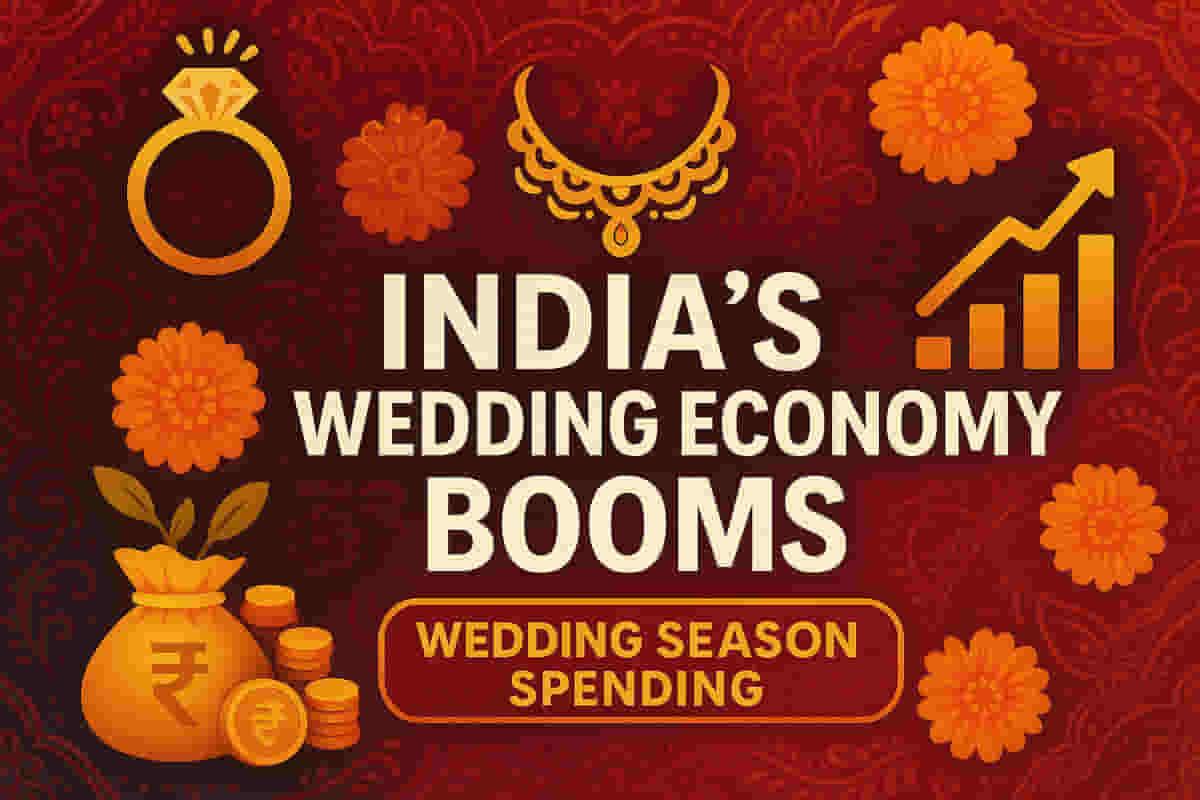India's Wedding Season Poised for Record ₹6.5 Lakh Crore Spending, Boosting Economy
Economy
|
30th October 2025, 12:41 PM

▶
Short Description :
Detailed Coverage :
India's upcoming wedding season, spanning from November 1 to December 14, is projected by the Confederation of All India Traders (CAIT) to generate an impressive ₹6.5 lakh crore in economic activity, with approximately 46 lakh weddings expected. This spending figure shows substantial growth compared to previous years: ₹5.9 lakh crore in 2024, ₹4.74 lakh crore in 2023, and ₹3.75 lakh crore in 2022.
CAIT attributes this surge to increasing disposable incomes, rising prices of precious metals, and bolstered consumer confidence. The wedding economy is a crucial pillar of domestic trade, blending tradition with self-reliance.
The expenditure is distributed as follows: apparel and sarees (10%), jewellery (15%), electronics and electricals (5%), dry fruits and sweets (5%), groceries and vegetables (5%), and gift items (4%). Services include event management (5%), catering (10%), photography and videography (2%), travel and hospitality (3%), floral decoration (4%), and music/light/sound services (3% each).
Impact: This news holds significant importance for the Indian stock market and Indian businesses. It signals robust consumer spending, a key driver for numerous sectors including retail, jewellery, electronics, hospitality, and financial services. The projected surge in economic activity suggests positive revenue potential for companies involved in the wedding industry and indicates overall economic health. Furthermore, the emphasis on the "Vocal for Local" initiative points to growth opportunities for domestic manufacturers and artisans, potentially boosting their market performance. The estimated ₹75,000 crore contribution to government tax revenues is also a positive fiscal indicator. Overall, the sentiment generated by this news is bullish for sectors reliant on discretionary spending. Rating: 8/10.
Difficult Terms: * Lakh Crore: In India, 'Lakh' means 100,000 and 'Crore' means 10 million (10,000,000). Therefore, 'Lakh Crore' signifies 100,000 times 10 million, which equals 1 trillion (1,000,000,000,000). * Disposable incomes: This refers to the amount of money households have left to spend or save after paying taxes. * Inflation: This is the rate at which the general level of prices for goods and services is rising, leading to a fall in the purchasing power of money. * Consumer confidence: This is a measure of the optimism consumers feel about the overall state of the economy and their personal financial situation, influencing their spending habits. * MSMEs: Stands for Micro, Small and Medium Enterprises. These are small to medium-sized businesses that form a significant part of the Indian economy. * GST (Goods and Services Tax): A comprehensive indirect tax levied on the supply of goods and services in India. * Unorganised sector: This refers to economic activities that are not registered, regulated, or monitored by the government, often characterized by informal employment and operations. * AI-based planning tools: These are software applications that utilize Artificial Intelligence to assist in organizing and managing events like weddings. * Digital content creation: The process of producing various forms of content, such as videos, images, and text, for online distribution and consumption.